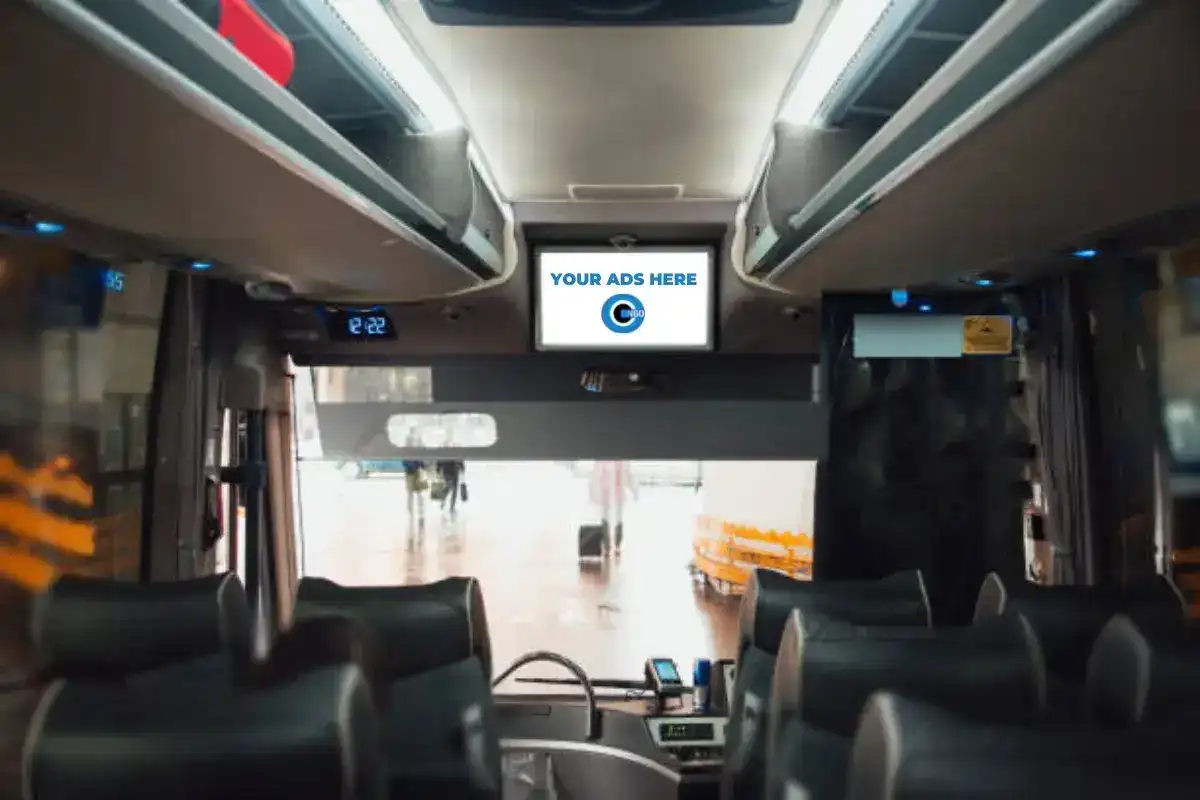Understanding the Role of Transportation Advertising And Marketing in Enhancing Brand Exposure and Consumer Interaction
Transit advertising has actually become a critical aspect in the marketing landscape, providing distinct opportunities for brand names to boost their visibility and involve customers successfully. With the capacity to reach a restricted and diverse target market during their day-to-day commutes, these advertising and marketing techniques are not merely about presence; they have to do with developing purposeful links with prospective clients. As we explore the multifaceted advantages and cutting-edge techniques within transit advertising, it ends up being vital to consider exactly how these elements collectively influence consumer assumption and actions, questioning regarding their long-lasting influence on brand commitment.
Meaning of Transportation Marketing
Transportation advertising and marketing refers to the technique of advertising items, services, or brands via ads placed around public transportation systems. This type of marketing encompasses a range of positionings, including posters on trains and buses, electronic screens at transit stations, and covers on the exterior of lorries. It intends to reach a diverse target market, profiting from the high foot website traffic associated with public transportation.
Transportation advertising is tactically placed to capture the interest of travelers, who usually invest considerable time taking a trip or waiting. By integrating ads into the day-to-day routines of people, brands can develop a lasting impact and foster brand acknowledgment. The tool is especially reliable in city settings, where public transport is a main setting of traveling.
Additionally, transportation marketing can promote local targeting, enabling organizations to get to specific demographics based upon transportation courses and station locations. As city populations expand and the usage of public transportation increases, this advertising technique has acquired prestige as an important part of incorporated advertising techniques. The dynamic nature of transportation advertising, incorporated with its ability to involve customers in a captive setting, highlights its significance in contemporary marketing methods.
Advantages of Transportation Advertising
The efficiency of transit marketing exists in its capacity to deliver a multitude of advantages to brand names seeking to boost presence and engagement. One of the main benefits is the substantial reach it offers; transit ads can properly target varied demographics across urban locations, getting to both commuters and pedestrians alike. This wide exposure significantly increases brand recognition.
An additional advantage is the high regularity of impressions. As transportation automobiles follow established routes and stop at multiple areas, they develop recurring direct exposure that strengthens brand messages. This frequency cultivates knowledge, which is vital in consumer decision-making.
Transportation advertising and marketing is additionally affordable contrasted to other media platforms. Offered its large reach and possibility for high perceptions, brands typically experience a reduced expense per thousand impacts (CPM), maximizing their advertising and marketing budget.
In addition, transportation advertisements can produce a feeling of neighborhood link. By lining up with local transportation systems, brands can resonate with regional audiences and foster a feeling of regional satisfaction. This localized approach boosts brand commitment and involvement, making transportation marketing an engaging choice for organizations intending to strengthen their existence out there.

Effective Methods for Transit Campaigns
To maximize the impact of transportation campaigns, brand names must leverage calculated preparation and execution customized to their target market. Initially, recognizing the market qualities of the target market using public transportation is crucial. This permits brands to produce customized messaging that resonates with potential customers.
Next, choosing the best transportation mediums is crucial. Whether making use of bus wraps, train posters, or electronic screens, each medium has one-of-a-kind benefits that can boost visibility. As an example, vibrant visuals on bus visit the site wraps can attract attention, while digital ads can be upgraded frequently to reflect prompt promos.
Moreover, integrating a cohesive branding technique across transportation platforms guarantees consistency and strengthens the brand's identity. Utilizing distinctive styles and remarkable taglines will certainly strengthen brand name recall amongst commuters.
Finally, timing is a crucial factor in executing successful transit campaigns. Releasing projects throughout top traveling hours or regional occasions can dramatically increase visibility and involvement. By employing these methods, brand names can i thought about this effectively harness the potential of transportation marketing, promoting higher recognition and connection with their target market. Ultimately, a well-executed transit project can drive significant growth in brand name visibility and customer involvement.

Measuring Impact and Engagement
In examining the performance of transportation ad campaign, precise measurement of effect and involvement is crucial for brand names looking for to enhance their marketing strategies. Metrics such as reach, frequency, and impacts provide foundational information to assess visibility. Analyzing these variables helps figure out the amount of potential customers are exposed to the ads during their daily commutes.
Involvement can be further gauged with customer communications, such as site traffic, social networks mentions, and direct reactions to calls-to-action included in the advertisements. Using devices like QR codes or one-of-a-kind Links can promote monitoring of customer actions straight linked to transit projects. Studies and comments devices additionally act as important approaches to collect qualitative information on consumer perceptions and recall of the ad.
Furthermore, progressed analytics and acknowledgment versions can correlate transit exposure with subsequent buying habits, providing insights into the return on investment. By employing a comprehensive strategy that combines measurable and qualitative measures, brand names can create a nuanced understanding of their transit advertising effect. Eventually, this data-driven method makes it possible for brands to fine-tune their projects, ensuring they resonate efficiently with target audiences and boost overall brand name presence.
Case Studies of Successful Projects
Successful transportation marketing campaigns act as engaging instances of exactly how reliable methods can raise brand name visibility and engagement. Transit Advertising Philippines. One noteworthy situation is the "I Love New York" project, which changed the city's photo and brought in numerous travelers. By using metro ads, billboards, and bus covers, the campaign created a solid, natural brand name identity, resulting in a significant uptick in tourist and regional service patronage
One more exemplary project is Coca-Cola's "Share a Coke" campaign, which leveraged transportation advertising and marketing to individualize the brand experience. By including popular names on marketing products across numerous transportation platforms, Coca-Cola fostered a deeper psychological link with customers, encouraging them to share their experiences on social media sites.
In addition, the "Got Milk?" campaign properly used mass transit advertisements to get to a broad audience, enhancing the message of the significance of milk in a balanced diet plan. The directory campaign saw a quantifiable boost in milk consumption in target demographics.
These case research studies highlight that when executed thoughtfully, transit advertising can dramatically boost brand visibility, foster customer involvement, and drive measurable results, demonstrating its important function in modern advertising and marketing approaches. - Transit Advertising Philippines
Verdict
Finally, transit marketing offers as a crucial device for improving brand presence and cultivating consumer interaction. By using strategically put ads within public transport systems, brand names can efficiently enhance and get to varied target markets acknowledgment through regular exposure. The implementation of targeted messaging and ingenious strategies further magnifies the impact of transit projects. Ultimately, the capability to determine interaction and evaluate successful situation studies underscores the performance of transportation advertising and marketing in driving brand name loyalty and customer interactions.
Transportation advertising has actually arised as a crucial element in the advertising landscape, supplying one-of-a-kind opportunities for brands to raise their exposure and engage consumers successfully.In addition, transit marketing can promote local targeting, allowing companies to get to certain demographics based on transportation courses and station areas.In evaluating the performance of transportation advertising and marketing campaigns, accurate dimension of impact and engagement is important for brand names seeking to enhance their advertising and marketing approaches.Effective transit advertising and marketing projects serve as compelling instances of just how efficient techniques can elevate brand name visibility and engagement.In conclusion, transit advertising serves as a crucial tool for improving brand exposure and cultivating consumer involvement.